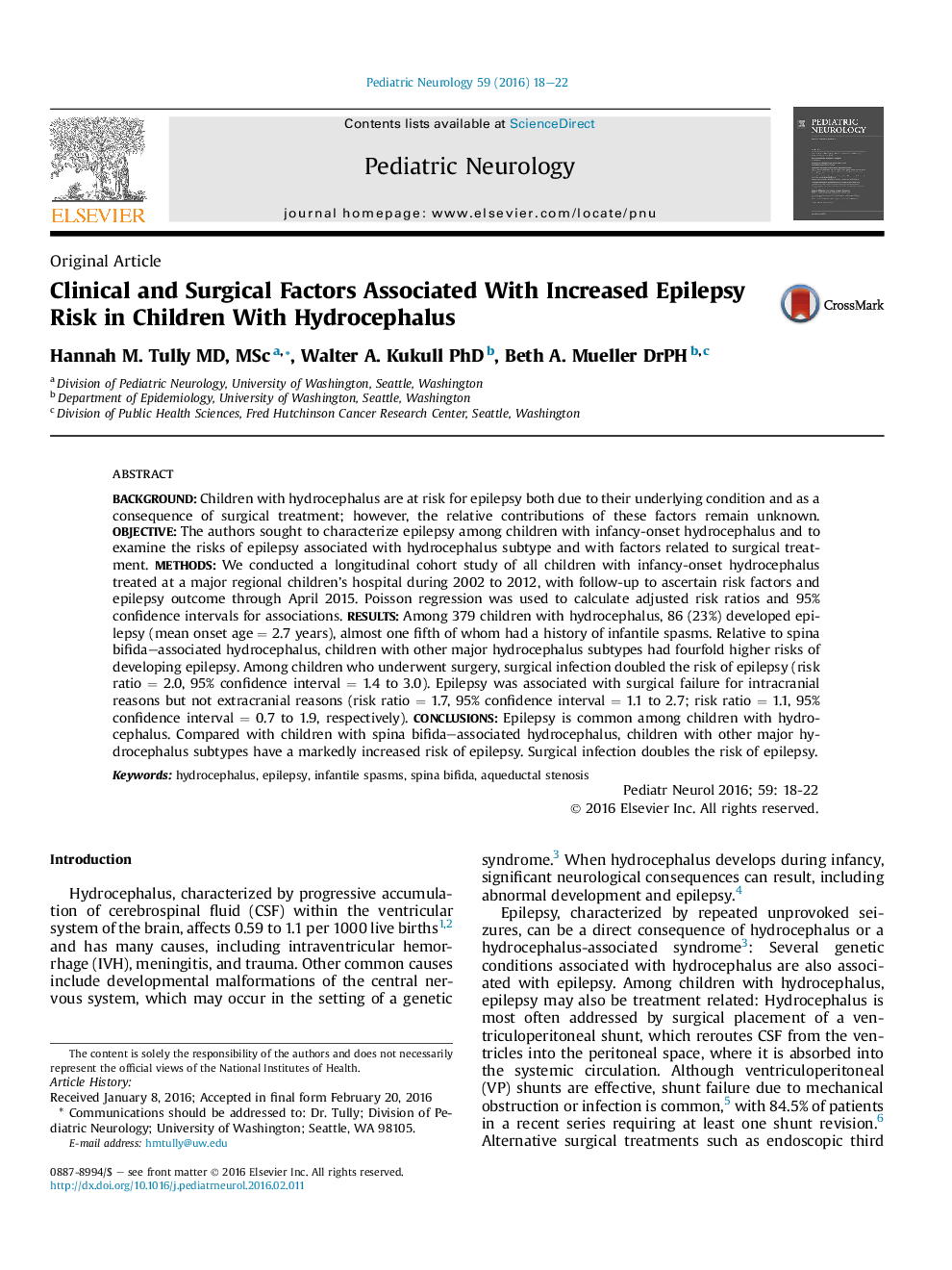| Article ID | Journal | Published Year | Pages | File Type |
|---|---|---|---|---|
| 3084331 | Pediatric Neurology | 2016 | 5 Pages |
BackgroundChildren with hydrocephalus are at risk for epilepsy both due to their underlying condition and as a consequence of surgical treatment; however, the relative contributions of these factors remain unknown.ObjectiveThe authors sought to characterize epilepsy among children with infancy-onset hydrocephalus and to examine the risks of epilepsy associated with hydrocephalus subtype and with factors related to surgical treatment.MethodsWe conducted a longitudinal cohort study of all children with infancy-onset hydrocephalus treated at a major regional children's hospital during 2002 to 2012, with follow-up to ascertain risk factors and epilepsy outcome through April 2015. Poisson regression was used to calculate adjusted risk ratios and 95% confidence intervals for associations.ResultsAmong 379 children with hydrocephalus, 86 (23%) developed epilepsy (mean onset age = 2.7 years), almost one fifth of whom had a history of infantile spasms. Relative to spina bifida–associated hydrocephalus, children with other major hydrocephalus subtypes had fourfold higher risks of developing epilepsy. Among children who underwent surgery, surgical infection doubled the risk of epilepsy (risk ratio = 2.0, 95% confidence interval = 1.4 to 3.0). Epilepsy was associated with surgical failure for intracranial reasons but not extracranial reasons (risk ratio = 1.7, 95% confidence interval = 1.1 to 2.7; risk ratio = 1.1, 95% confidence interval = 0.7 to 1.9, respectively).ConclusionsEpilepsy is common among children with hydrocephalus. Compared with children with spina bifida–associated hydrocephalus, children with other major hydrocephalus subtypes have a markedly increased risk of epilepsy. Surgical infection doubles the risk of epilepsy.
